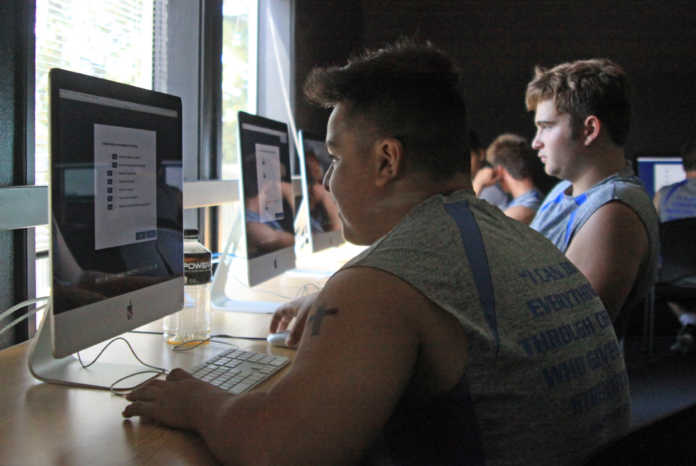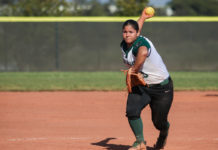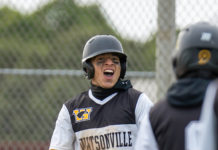WATSONVILLE — The Monte Vista Christian football program is taking extended steps to protect its athletes from head injuries.
M.V.C. this year is using the ImPACT (Immediate Post-Concussion Assessment and Cognitive Testing) program as another protective device against concussions.
ImPACT, founded in 2002 by neuropsychologist Mark Lovell, doesn’t help prevent concussions, rather the technology helps athletic programs diagnose and manage concussions. Athletes take an assessment on a computer that tests their short-term memory and reaction time before the beginning of the season. The results of that initial test serve as a baseline that the athlete would have to meet in order to return to the field following a head injury.
On its website, ImPACT states that it is the only concussion assessment aid for ages 5-59 cleared by the FDA.
Hundreds of pro sports teams, colleges and high schools around the country have adopted ImPACT over the years, including Ohio State, the Unveristy of Texas and even the U.S. national soccer team. M.V.C.’s athletic trainer, Jared Bradley, said he believes more programs will continue to jump on the ship.
“It only makes sense to try and be as safe as possible with head injuries,” Bradley said.
But over the years studies have found that ImPACT is not guaranteed to give completely accurate results and should not be used as the lone determinant of whether an athlete is ready to return from a head injury. One test conducted in 2007 at the University of Illinois by Steven Broglio, the director of the NeuroSport Research Laboratory at the University of Michigan, only fueled the doubt.
Broglio and his colleagues conducted baseline tests with more than 100 students, using several computer-based systems, including ImPACT. They tested the same group, all of which did not suffer a head injury since the initial test, 45 and 50 days later. The results showed there was little consistency with the baseline test. On a scale from 0 to 1, where 0 reflects no correlation and 1 the perefect correlation, the five scores from ImPACT at baseline and retest had correlation ranging from 0.15 and 0.39, failing the researcher’s acceptable cut-off of 0.75 for a useful test.
“Keep in mind these are all healthy college students,” Broglio said to The Bulletin in Bend, Ore. in an article published in 2013, “and we had somewhere in the neighborhood of a 40 percent false-positive rate.”
M.V.C. first-year head coach Bruce Dini said he and his coaching staff do not plan to use the test as a be-all-end-all. It will be one of several tools used in the process following a head injury. The final ruling of whether a player is ready to put the helmet back on will still come from a trained physician, Dini said.
“What it does is it gives us another layer of protection for the kids to make sure we’re not putting their safety at risk,” Dini said. “Concussions are tricky. We know that. We’re trying to exercise all the resources we have. If this can help the process in any way, we’ll be happy about that.”










